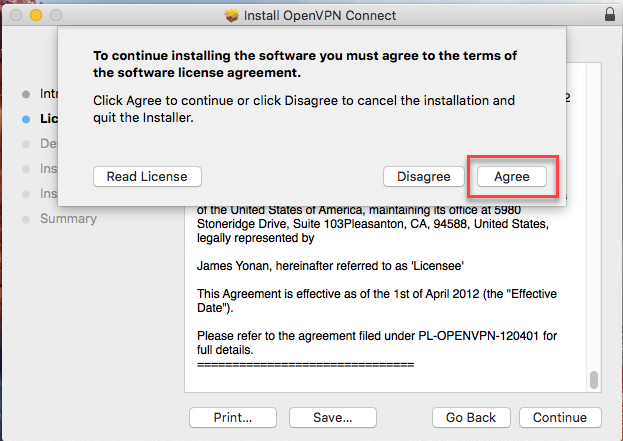FTC disclaimer: This post contains affiliate links and I will be compensated if you make a purchase after clicking on my link.
VPNs are used to protect sensitive data from hackers and spies. They also help you access blocked websites and services. But most importantly, they allow you to securely connect to public Wi-Fi hotspots without being tracked.
In this tutorial, we will learn what OpenVPN is, how it works, and how to set it up on your computer. We will also cover how to use it with popular apps such as Netflix, Hulu, Spotify, Amazon Prime Video, etc.
OpenVPN is a free, open-source application that allows you to create secure connections between two computers over the internet.
It encrypts all traffic between the two devices using strong encryption algorithms. This means that even if someone intercepts your connection, they won’t be able to read any information sent between the two devices.
This tutorial covers everything you need to start with OpenVPN, including installing the app, configuring it, connecting to servers, and setting up port forwarding.
What is OpenVPN?
OpenVPN is a VPN network protocol and software that uses virtual private networking (VPN) techniques to secure point-of-presence (PoP) and site-to-subnet connections.
OpenVPN is based on the L2TP/IPsec standard and can encrypt traffic over IP networks such as TCP/IP, UDP, SCTP, IPv6, GRE, etc.
The program is written in the C programming language and runs on Linux, Windows, macOS, FreeBSD, Solaris, NetBSD, BSDi, OS X, IRIX, HP-UX, AIX, Tru64 UNIX, and many others.
Today, OpenVPN is one of the most popular VPN protocols used worldwide. Its popularity stems from the fact that it is easy to use, free, and open source. For example, you can download OpenVPN from GitHub here.
What does OpenVPN do?
OpenVPN is an open-source software package that provides security and privacy for Internet connections. In layman’s terms, it allows people to connect to public networks like Wi-Fi hotspots without worrying about being tracked or monitored.
The OpenVPN protocol is responsible not just for establishing a secure tunnel between the VPN client and the VPN server but also for handling client-server communication. Essentially, it helps establish a secured “tunnel” between the VPN client and the VPN server.
OpenVPN handles encryption and authorization extensively using the Open SSL library. This library is used to encrypt and authenticate traffic.
Also, OpenVPN can use both UDP (User datagram protocol) and TCP (Transport Control Protocol) to transmit information. If you’re not familiar with TCP and UDP, they are transport layer protocols, and they are used to transmit information over the internet.
TCP is more stable since it offers error correction features (when a packet is sent, TCPwaits for confirmation before sending it again or sending a new packet). UDP doesn’t perform error correction, making it a little less stable but much faster.
If you’ve ever used OpenVPN, you might know that it can use UDP or TCP to transmit data. If you’re not familiar with TCP and UDP, they are transport layer protocols, and they are used to transmit traditional surfaces over the internet.
What are OpenVPN UDP and TCP?
OpenVPN allows you to connect to your home network via a public Wi-Fi hotspot, hotel, coffee shop, etc.
While most people use OpenVPN to protect themselves against snooping hackers, there are two different types of connections: UDP and TCP.
UDP stands for User Data Packet and refers to how packets are sent across the Internet. A packet is a single piece of information that contains both the source IP address and destination IP address.
When sending a file, such as a picture, video, or document, the source IP address is assigned to the computer that sends the file, and the destination IP address is assigned to where the file is being delivered.
The problem with this method is that it doesn’t guarantee delivery. A hacker could likely intercept the packet and change the destination IP address.
If the hacker changed the destination IP address to one of his own computers, he’d be able to see every file you send.
To prevent this, OpenVPN uses TCP, which stands for Transmission Control Protocol. TCP ensures that the packets reach their final destinations without interruption. To do this, OpenVPN creates a virtual tunnel that connects your device to your router.
This virtual tunnel is established by creating a secure encrypted link between your device and router.
Once this link is set up, the packets travel along the same path as normal traffic. However, once they arrive at the router, the packets are rerouted to the correct port on your device.
Let me explain if you’re wondering why you need to know about this. Many routers have built-in security features that block incoming packets unless they match specific criteria.
For example, some routers will only accept packets from known devices like smartphones or tablets. Other routers will require authentication credentials before allowing packets to enter the network.
In either case, if your router blocks incoming packets, your attempt to access the Internet won’t work. Instead, you’ll receive errors like “Cannot establish a connection.”
Fortunately, OpenVPN provides a solution for this issue. All you have to do is enable TCP/IP protocol support on your router.
How does OpenVPN Work?
OpenVPN works by establishing a connection between two devices over a public IP address.
In most cases, this connection is encrypted using a shared secret key called a pre-shared key (PSK), which allows both parties to communicate securely without exchanging passwords.
The client device sends a request to the VPN server asking for an IP address. Then, the server responds with one of its own addresses, which is typically different from what the client requested.
Once the client receives the response, it creates an unencrypted tunnel between itself and the server. This tunnel can be established over either TCP or UDP, depending on the type of communication desired.
After the tunnel is established, the client and server negotiate the PSK, usually stored on each side as plaintext.
Once they agree upon the PSK, the client encrypts all traffic sent to the server with the agreed-upon key. Finally, the client and server send messages to each other via the newly-established encrypted channel.
Understanding the role of OpenVPN in VPN
The OpenVPN protocol provides secure network connections over public networks such as Wi-Fi, Ethernet, and mobile broadband.
This VPN solution uses tunneling protocols like TCP, UDP, and IPsec to encrypt data traffic and establish secure tunnels across untrusted networks.
To make sure that the encrypted packets are delivered securely, OpenVPN uses strong cryptography algorithms such as RSA, ECC, and DSA.
Furthermore, it includes several security features such as Perfect Forward Secrecy, Diffie-Hellman key exchange, and certificate pinning.
In addition to securing data transmission, OpenVPN ensures the integrity of the client side.
For example, it automatically implements a dynamic DNS system to update the remote device’s hostname.
Moreover, the protocol allows clients to authenticate themselves to the server via username and password combinations.
Although OpenVPN is primarily used for connecting computers behind firewalls, it can also be employed to connect devices within the same local area network (LAN).
This makes it possible to access resources on a corporate LAN from outside the organization without having to open ports on the firewall.
OpenVPN Encryption
The goal of encryption is to make the information unreadable to anyone except those who are supposed to see it. When we talk about encryption, we’re talking about turning plaintext messages into cipher text.
Cipher text is a secret code that cannot be read unless someone knows the key.
OpenSSL uses symmetric encryption algorithms like AES and 3DES and asymmetric encryption algorithms like RSA and DSA. Symmetric algorithms require both parties to agree upon a shared key before sending encrypted messages.
Asymmetric algorithms work best for public/private keys, where each party creates a unique pair of keys. These keys are different enough that only one person can decode the message.
OpenVPN uses the OpenSSL API to communicate securely with the OpenVPN servers.
Why use OpenVPN? Advantages of using OpenVPN
OpenVPN is one of the most popular VPN protocols today. There are many reasons why people choose OpenVPN over other VPN protocols like PPTP, L2TP/IPSec, etc. Here are some of those reasons:
1. Security – OpenVPN uses strong encryption algorithms such as AES256 and SHA512 to ensure that your connection is safe and secure.
2. Privacy – OpenVPN allows you to connect privately without giving away your IP address. Your ISP won’t know where you are connecting from or where you’re connecting to. You’ll also be able to access geo-restricted content.
3. Reliability – OpenVPN is rock solid. Its reliability makes it ideal for businesses and organizations that require reliable connectivity.
4. Compatibility – OpenVPN works on almost every device, including Windows, macOS, Linux, Android, iOS, routers, smart TVs, game consoles, etc.
5. Speed – OpenVPN is fast. It’s usually faster than IPSec and PPTP.
6. Cost – OpenVPN is free. Unlike paid VPN solutions, you don’t need to pay anything to use OpenVPN.
Is OpenVPN Safe to Use?
OpenVPN is one of the most popular encryption protocols around. It’s been used by millions of people worldwide because it offers many flexibility and features.
However, there are some downsides too. For example, the protocol is vulnerable to man-in-the-middle attacks and DNS leaks.
But thanks to a recent audit conducted by Qualys, we know that none of those risks threaten your privacy or security.
The audit focused on both server-side and client-side implementations of OpenVPN. They looked at the code, documentation, and configuration files.
They found no vulnerabilities or flaws that could compromise user data. Plus, the protocol has undergone two security audits already.
One came from NCC Group Inc., while the second came from CertiVox. Both audits only found minor issues (which were fixed quickly).
In addition, OpenVPN has a large in-depth list of what you can do to secure your connection further once you configure the protocol on your device. You can read about all of that here.
How Fast Is OpenVPN?
OpenVPN is one of the most popular VPN protocols and provides pretty solid performance numbers.
However, those numbers are based on averages and don’t consider many variables involved in real-world situations. We’ve seen OpenVPN perform much better than advertised in certain cases.
Our tests found that OpenVPN performed well in terms of speed. We tested OpenVPN against TCP and UDP connections and found that it outperformed TCP in download speeds.
This makes sense, given that TCP uses multiple packets per connection, whereas UDP just sends data once.
However, OpenVPN tends to fall behind in upload speeds because of its strong encryption. Encryption eats up network resources, and you get lower throughput overall.
So while OpenVPN might seem like a great option for downloading large files quickly, it won’t necessarily work well for uploading large amounts of data.
How to Use OpenVPN?
OpenVPN is one of the most popular protocols used today for securing data over public networks such as the Internet. Many companies use it to protect sensitive data within their internal network.
This section will cover how to install and configure OpenVPN on both Windows and Mac OS X. We’ll also examine the basics of connecting to an OpenVPN server.
Look for the configuration file.
To connect to your VPN server, OpenVPN needs some configuration files. These are stored locally on your computer or the remote server.
You can copy those files using a desktop client like Windows 7, 8, 10, or Linux. You don’t even need administrator privileges.
However, things get a little trickier if you’re using a mobile device. Most Android devices ship with OpenVPN preconfigured, but there might be issues regarding permissions.
For example, it could ask for access to your contacts, photos, etc., which is something you probably don’t want to give up.
Luckily, we’ve got a solution for that too. We recommend downloading the OpenVPN GUI app for Android, allowing you to easily configure your VPN settings without messing with text files.
Installing OpenVPN Client
You’ll need to know what operating system you’re installing OpenVPN on. For example, if you plan to use OpenVPN on Windows 10, you’d need to download the appropriate configuration file for Windows.
Likewise, if you intend to set up OpenVPN on macOS, you’d need to grab the configuration file for macOS.
Choose a “.ovpn” filename extension, such as “OpenVPN Server Configuration File v3“.
After downloading the configuration file, double-click it to open it in your preferred text editor. In this tutorial, we’ll use nano, but feel free to use whatever text editor you prefer.
Now scroll down to the bottom of the document and look for the following section:
client-config-dir /etc/openvpn/ccd
The next thing you’ll need to do is copy the contents of the directory mentioned above into your home directory.
To do this, navigate to your home directory using cd ~ and press Enter. Now type the below command and press enter.
sudo cp -r /etc/openvpin/ccd ~/
Importing VPN data
Now that you’ve installed OpenVPN, it’s time to import some data into the system. This step isn’t strictly necessary, but it simplifies things. We’ll assume you’re running Windows 7 or 8.1 here.
You can download it directly from the OpenVPN site.
Next, select “Import Configuration File.” Navigate to where you saved the “.ovpn” file you downloaded earlier. Select the file, and hit OK.
If everything went well, you should now see a list of all the servers you added to your configuration file. Click on each server name, and you should now see a checkmark next to it.
Finally, click on the “Save Changes” button. Your changes are now stored locally.
Establish a VPN Connection
You’ll need to download and install the OpenVPN client software on your computer to establish a VPN connection. There are several different options, depending on your operating system.
For example, there’s a Windows version, a Mac version, and even one for Linux. Once you’ve downloaded the file, double-click it to open up the installer.
Follow the instructions to complete the installation. Now, launch the program and select “Connect.” Enter your username and password into the fields and press “OK.”
You should now see a dialog box asking whether you want to allow the VPN connection to make changes to your network settings.
Click “Yes” and follow the prompts to finish connecting. After a few seconds, you should see a window displaying information about your connection.
Note down the server name and the IP address assigned to you. This will be used later to access your account remotely.
Customizing OpenVPN settings
OpenVPN doesn’t have many settings. But you can do a few things to customize how it works.
You can change whether it opens automatically when you boot your computer. Just select “Settings” from the menu bar and check off the box next to “Automatically launch.”
You can also disable the “Logging Screen,” which appears when connecting to a VPN server. To do this, uncheck the box next to “Show Log Window.”
You can always use another if you don’t like how the app looks. You might even find something better out there. So we’ll give you a list of similar apps to OpenVPN.
The best part about OpenVPN is that it’s free. There are no subscription fees or hidden costs. All you pay is for bandwidth.
What is the Best VPN that uses OpenVPN Protocol?
OpenVPN is today’s most common open-source virtual private network (VPN) protocol.
This protocol allows users to securely connect to remote networks via public Internet connections such as Wi-Fi hotspots, mobile data networks, or cable modem/DSL routers. Many popular VPN protocols like L2TP/IPsec and PPTP rely on OpenVPN under the hood.
While plenty of VPN companies offer free trials, paid plans start around $10 per month. But if you’re looking for a reliable VPN provider, here are some of my favorites that support the OpenVPN protocol.
1. PrivateInternetAccess
With over 3 million customers worldwide, PrivateInternetAccess offers unlimited bandwidth and a 30-day money-back guarantee.
They offer a variety of features, including a Kill Switch, DNS leak protection, IP leak protection, and a kill switch. Their apps work on Mac OS X, Windows, iOS, Android, Linux, ChromeOS, and Routers.
2. ExpressVPN
ExpressVPN boasts more than 4,500 servers in 90 countries. They offer unlimited bandwidth, a 30-day money-back guarantee, and a 7-day trial.
You can choose from three subscription options: Basic, Plus, and Pro. All subscriptions include a no-logging policy, 256-bit AES encryption, and PIA’s unique “double VPN” technology.
3. NordVPN
NordVPN claims to provide the fastest speeds possible while maintaining excellent security and privacy.
They offer unlimited bandwidth and a 30-day money-back guarantee. Like ExpressVPN, NordVPN offers three subscription packages: Standard, Premium, and Ultimate.
4. VyprVPN
VyprVPN is another popular choice among VPN enthusiasts thanks to its strong privacy policies and rock-solid customer service.
They offer unlimited bandwidth along with a 30-day money return guarantee. There are three subscription levels: Lite, Standard, and Advanced.
5. TunnelBear
TunnelBear provides unlimited bandwidth, a 14-day money-back refund, and a seven-day free trial. They offer three subscription levels: Free, Plus, and Business.
How is OpenVPN Compared with other VPN protocols?
OpenVPN is one of the most popular VPN protocols out there. It tends to outperform many others, such as L2TP/IPsec, PPTP, IPSec, SSTP, IKEv1, and IKEv2. However, some still wonder how it compares to other VPN protocols. Let’s take a look.
OpenVPN vs. SSTP
The world of VPN technology is constantly evolving, and one of the most popular ways to connect to the internet securely is via a Virtual Private Network (VPN).
These connections allow you to access blocked sites, stream video without buffering issues, and even protect against online snooping. But there are many different types of VPN out there; some are far more secure than others.
One of the most common types of VPN is called Secure Shell Tunnel Protocol (SSTP), and it’s been around since the early 2000s.
This tunneling protocol uses SSL 3.0, which offers 128-bit encryption and authentication. It also supports TCP/IP, UDP, and ICMP traffic.
However, it turns out that SSTP isn’t quite as secure as we thought. It depends on certain servers’ ability to correctly interpret and process the protocol header information. If those servers don’t work properly, the whole thing falls apart.
Microsoft developed OpenVPN – a newer protocol that does away with SSL 3.0 entirely, offering 256-bit encryption and authentication along with IPSec, TLS, and DTLS. It also supports HTTP, HTTPS, FTP, SSH, DNS, and P2P traffic.
The best part about OpenVPN is that you don’t have to pay for it. You can download the software for free and even host your own server.
One of the biggest differences is that OpenVPN supports authentication while SSTP does not.
This makes SSTP less safe because it leaves you vulnerable to man-in-the-middle attacks.
Another difference is that SSTP requires a Windows Server License, whereas OpenVPN is free to download and run.
But what happens if you’re running a small business and don’t have the resources to run a dedicated VPN server?
Then you might consider using a commercial VPN provider like NordVPN, ExpressVPN, and Private Internet Access (PIA).
OpenVPN vs. WireGuard®
WireGuard is a VPN protocol developed by Jason Donenfeld and Chris Simkins, based on the Linux kernel.
They wanted to create a VPN protocol that could be fast enough to use on mobile devices and have low power consumption. This goal led to the creation of WireGuard, which offers great performance while remaining secure.
It offers better performance than OpenVPN because it doesn’t rely on third-party libraries like OpenSSL. Instead, it implements all cryptography functions itself.
This makes it smaller, faster, and less likely to suffer from bugs that could compromise security.
The WireGuard project aims to replace OpenVPN, and it already supports many common configurations, including IPSec, L2TPv3, PPTP, SSTP, and IKEv1. It also provides support for IPv6 and DNS64.
In addition to providing a secure tunneling solution, WireGuard also includes clientless NAT traversal, easy host configuration, and automatic failover.
In addition to offering better performance, WireGuard is more straightforward to configure than OpenVPN.
You don’t need to install anything besides the WireGuard client; you just run the executable file and connect it to your network. Also, there are no configuration files, making it easy to set up.
The main difference between the protocols is how they handle authentication. OpenVPN uses certificates, whereas WireGuard uses keys.
These keys are generated automatically during the connection process. If you want to add additional servers, you’ll still need to generate new keys.
With OpenVPN, you must manually edit the config file whenever you want to add a server.
OpenVPN vs. SodtEther
SoftEther is a free software project developed by the Japanese security firm CyberAgent.
It aims to provide high-speed Internet access over public networks, such as hotels and coffee shops, without requiring users to install anything extra on their computers.
This makes it ideal for travelers looking to bypass restrictions imposed by ISPs.
OpenVPN is a relatively old protocol that predates many modern technologies.
It was initially designed for tunneling data across the internet, but it has since been adopted by companies like Apple, Amazon, Facebook, Microsoft, Netflix, PayPal, and Yahoo.
However, it isn’t always easy to configure because it requires you to download and run a client application on your computer.
Many people think of OpenVPN as slower than SoftEther, but that’s not true. Instead, it’s just one of those things involving tradeoffs. For example, OpenVPN uses UDP packets to transmit data, whereas SoftEther uses TCP.
The researchers tested both protocols on Windows 7, Mac OS X 10.7 Lion, Ubuntu 12.04 LTS, and Android 4.1 Jelly Bean.
Their findings show that SoftEther outperforms OpenVPN on all four operating systems.
On Windows 7, it took SoftEther about 0.5 seconds longer to establish a connection than with OpenVPN.
On Ubuntu, it took SoftEether 5 minutes and 30 seconds to connect compared to OpenVPN’s 8 hours and 45 minutes.
And on Android, it took SoftETHER 2 minutes and 20 seconds to connect compared to 16 hours and 15 minutes with OpenVPN.
On average, SoftEther performed 13 times faster than OpenVPN.
OpenVPN vs. PPTP
There are plenty of VPN options for those looking to protect sensitive data while browsing the web.
However, some people prefer to keep things simple regarding securing their connection.
You might want to consider OpenVPN over PPTP if you’re one of those people. Here are some reasons why:
First off, PPTP is significantly less secure than OpenVPN. Not only does PPTP offer much lower levels of encryption than OpenVPN, but it also uses a protocol called Point-to-Point Tunneling Protocol (PPTP).
This protocol allows for far fewer security checks than OpenVPN. PPTP offers no security whatsoever beyond basic username/password authentication.
Another problem with PPTP is that it’s based on Microsoft’s proprietary protocols. This makes it easier for hackers to intercept traffic because they don’t have to reverse engineer the standard. They simply have to understand how Microsoft’s implementation works.
Finally, PPTP is limited to 128-bit encryption keys. This means that it can’t support modern encryption standards such as AES-256.
By comparison, OpenVPN supports 256-bit and 512-bit encryption keys, making it a better choice for protecting sensitive information.
OpenVPN vs. L2TP/IPSec
L2TP/IPsec is one of the most popular ways to secure remote access connections over IP networks.
However, it’s different from OpenVPN since it’s natively supported by Windows 10 and macOS, whereas OpenVPN requires third-party software.
In addition, L2TP/IPsec supports multiple protocols such as PPTP, PPP, RADIUS, and MSCHAPv2, while OpenVPN only supports TCP and UDP. This makes L2TP/IPSec easier to set up and configure.
However, L2TP/IPsec has limited to Layer 2 technologies like Ethernet, FDDI, ATM, Frame Relay, etc., while OpenVPN works with both Layer 3 and Layer 4 technologies like IPv4 and IPv6.
Also, OpenVPN offers better security features like authentication, encryption, and privacy extensions. Therefore, if you want to ensure that no one eavesdrops on your data, OpenVPN is the way to go.
OpenVPN vs. IPSec
IPSec is often paired up together with L2TP/IPsec and IKEv2 protocols. However, you might find VPN providers offering access to IPSec alone. Some VPN companies provide access to this protocol without any of the others.
So, what exactly is IPSec?
Well, it stands for Internet Protocol Security and provides encryption over IP networks. You can use IPSec to secure your network traffic, connecting to another computer, router, mobile phone, tablet, etc., or even across different networks.
The main difference between IPSec and OpenVPN is that the former works within a single LAN, while the latter is meant to connect multiple devices via public networks like the Internet.
However, both of them offer similar levels of security. They do differ in terms of portability, though. While OpenVPN works well on most platforms, IPSec requires special configurations. This is because it occupies kernel space, requiring root privileges to install properly.
Also, since IPSec occupies the kernel space, its security can be limited depending on how it’s configured. On the other hand, OpenVPN has no limitations, as it doesn’t require special permissions to run.
That also makes OpenVPN more portable than IPSec. If you want to use OpenVPN, you don’t need to worry about installing extra software on the remote device; just download the client app and start working. With IPSec, however, you’ll need to configure everything manually.
OpenVPN vs. IKEv2/IPSec
While OpenVPN and IPSec are secure protocols, it’s important to note that OpenVPN uses TLS / SSL to secure data at the transport layer, while IKEv1 and IKEv2 use IPsec to secure data at the IP layer. This distinction might seem minor, but it makes a big difference.
Generally, that’s not a major difference, but it’s still useful to understand what each protocol does. For example, OpenVPN offers more support across platforms, but IKEv1 is typically preferred over OpenVPN due to its superior performance and stability.
When we talk about VPN security, most people think of OpenVPN. But IKEv2 is a much better choice. Why? Because OpenVPN requires you to install software on every device you want to connect to your VPN.
If you’re connecting via iOS, Android, Windows, Linux, macOS, etc., you’ll need to download and install the appropriate version of the app. There’s no way around that.
However, IKEv2 doesn’t require installing anything extra on your computer. You just run the application once and have a VPN connection.
The same goes for smartphones. With OpenVPN, you’d need to install an app on every phone you wanted to connect to your VPN server.
But with IKEv2, you don’t even need to do that. You need to launch the VPN client on your smartphone, and you’re ready to go.
So why isn’t everyone using IKEv2? Well, one reason is that many companies prefer to use OpenVPN because it’s easier to set up.
They don’t necessarily care whether or not they use the best encryption technology. So they tend to choose OpenVPN because it takes less effort to configure.
But another reason is that IKEv2 is more stable than OpenVPN. When networks change, OpenVPN sometimes gets confused and drops connections. In contrast, IKEv2 won’t break down under those conditions.
And finally, IKEv2 is often considered the “native” VPN protocol on mobile devices. Most manufacturers include built-in VPN clients that use IKEv2. They’re easy to use and provide excellent performance.
The Bottom Line: How and when to consider OpenVPN
OpenVPN is both an open-source VPN protocol and VPN software. This article explains what OpenVPN is, how it works, why it’s used, and where to find it.
Most VPN providers offer this protocol because it’s very secure. It uses the OpenSSL library, which is based on the code of the popular SSL 3.0 protocol.
It also supports AES-256 encryption, which is much stronger than older encryption methods. In addition, OpenVPN runs well on most operating systems, including Windows, macOS, Linux, Android, iOS, and others.
Generally, you should choose a provider that offers access to OpenVPN connections.
However, you should also consider whether the provider offers access to other VPN protocol options, such as L2TP/IPSec, PPTP, SSTP, IKEv1, IKEv2, IPsec, and Cisco IPSec. Some providers do not support some VPN protocols, while others don’t support all of them.
If you’re looking for something simple, consider choosing a provider that offers just one type of VPN connection. If you want flexibility, pick a provider that offers several types of VPN connections.
For example, if you’re connecting to a server in China, you might want to connect via OpenVPN. But if you want to connect to a US server, you’ll probably want to use another type of VPN connection.
By reading their documentation, you can find out what VPN connections each provider offers. Ask your provider if you’re unsure how to configure your VPN connection. They usually provide detailed instructions.














